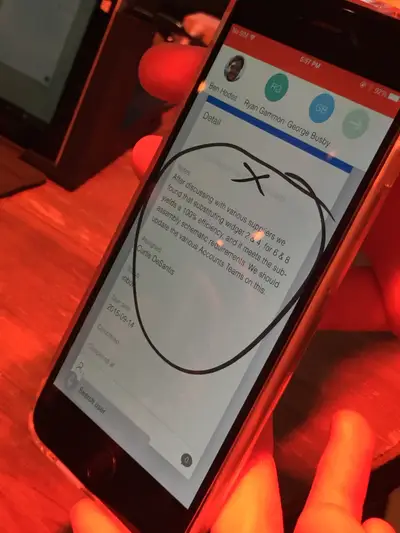Gigjam
Authored by:: Brendan Langen
Microsoft tool from 2016-2017 aimed at on-the-fly collaboration in virtual spaces, referenced by Chris Granger during his time there.
Gigjam made a few interesting design decisions that prefaced the decentralized networking boom.
- Users could build their own mini groups for different gigs, giving them spaces to share different sets of information depending on who was in the gig with them.
- This occurred through API plug-ins where users could select what would be shown/redacted within a given card - an amazing level of privacy and choice afforded to the user.
- Beyond just mouse and keyboard control, gigs used touch and voice input, as well.
 In the image above, you could draw a circle around the data you wanted to be included, and an X over anything you want to redact.
In the image above, you could draw a circle around the data you wanted to be included, and an X over anything you want to redact.
GigJam combines data from a variety of services including Microsoft’s own Office 365, Trello, Dropbox, and Salesforce. Users can then bring that information into a shared workspace, or “gig,” allowing them to quickly work together.
Users can easily redact part of the information they’re sharing with other people, meaning they can selectively share only what needs to be seen in order to get a job done.
Here’s how it works: One user starts a “Gig,” and then pulls in information from whatever services they need, like email, Salesforce, Office documents, and Asana tasks. That information shows up as a card inside GigJam, where users can highlight some information inside a card, redact other information, and then send the whole bundle off to another user for review or editing.
It’s a good way to both keep focused on the task at hand (like editing only one slide out of a PowerPoint presentation) and also enables workers to more easily team up with people outside of their organization, like suppliers and contractors who shouldn’t be privy to some information.
The GigJam interface also combines a bunch of interesting input methods. Users can work entirely with the keyboard and mouse, but they can also interact with Gigs using touch and voice input. The service is a crazy bundle of different modern capabilities and looks in demos like something out of the future.